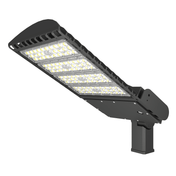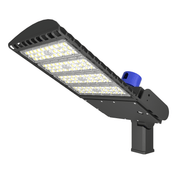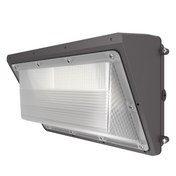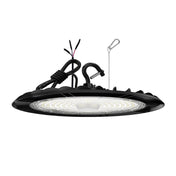1. Introduction: Lighting the Next Generation of Sports Arenas
In the past, stadium lighting was all about sheer power — massive lamps flooding fields with light. But as technology evolves and sustainability becomes a global priority, the lighting industry has entered a new era.
Today, LED Stadium Lights stand at the forefront of this transformation, combining energy efficiency, visual performance, and smart control to redefine how sports and events are experienced.
From local football fields to Olympic arenas, the global transition from traditional HID floodlights to LED-based systems is not just a trend — it’s a revolution.
2. Global Shift Toward Energy-Efficient Stadium Lighting
Across the world, cities and sports organizations are rethinking infrastructure investment in response to carbon neutrality goals.
Lighting, which accounts for up to 40% of a stadium’s total energy consumption, is one of the first areas targeted for modernization.
🌍 Global Market Insights
According to a 2025 report by MarketsandMarkets™, the global sports lighting market is projected to reach $1.5 billion by 2030, growing at a CAGR of 7.2%.
Among all lighting technologies, LED Stadium Lights dominate with over 85% market share, thanks to their unmatched efficiency and lifespan.
Key drivers include:
-
Rising energy costs pushing for low-consumption alternatives
-
Government incentives for eco-friendly retrofits
-
Expanding night-time sports and broadcast events
-
Increased demand for smart and connected lighting systems
3. What Makes LED Stadium Lights the Industry Standard
Traditional metal halide and halogen floodlights are quickly becoming obsolete. The new generation of LED Stadium Lights offers game-changing advantages across multiple dimensions:
⚙️ 3.1. Unparalleled Energy Efficiency
Modern LED stadium fixtures consume up to 70% less power than conventional systems while delivering equal or greater brightness.
For a 50,000-seat arena, this translates into tens of thousands of dollars saved annually on electricity.
💡 3.2. Brilliant, Flicker-Free Illumination
Broadcast-grade LEDs ensure high visibility with instant-on capability and no flicker, even under high-speed cameras used in 4K and 8K broadcasting.
🎨 3.3. Superior Color Rendering (CRI > 80)
Athletes and audiences experience true-to-life colors, enhancing both gameplay visibility and audience engagement.
🧠 3.4. Smart Control & Connectivity
LED systems now integrate with DALI, DMX, and IoT-based controllers, enabling:
-
Real-time dimming and scheduling
-
Zone-based illumination
-
Integration with event lighting effects and displays
🌦️ 3.5. Extreme Durability
With IP66–IP67 waterproofing, corrosion-resistant aluminum housings, and thermal management design, LED stadium lights are built to endure rain, wind, and heat for decades.
4. A Closer Look: The Technology Behind LED Stadium Lights
The innovation behind LED Stadium Lights goes far beyond simply replacing bulbs. It’s a convergence of optical design, thermal management, and digital control.
4.1. Precision Optics for Uniform Light
Advanced lens systems deliver beam angles ranging from 10° to 120°, ensuring even coverage across playing fields without dark spots or glare.
4.2. Thermal Optimization
High-quality aluminum heat sinks and integrated air channels dissipate heat efficiently, maintaining chip temperature for maximum lifespan.
4.3. Long Lifespan & Low Maintenance
LED chips last over 100,000 hours, reducing maintenance costs by up to 80% compared with metal halide lamps that degrade after 10,000–15,000 hours.
4.4. Modular and Scalable Design
Many modern stadium lights feature modular configurations, allowing easy replacement of individual components instead of entire fixtures.
5. Real-World Applications of LED Stadium Lighting
LED Stadium Lights are now essential in a wide range of venues, from sports complexes to industrial areas and large outdoor spaces.
| Application | Lighting Requirements | Recommended Wattage | Typical Setup |
|---|---|---|---|
| Football & Soccer Fields | 1200–2000 lux | 1000–1800W | 30–40 units per field |
| Baseball Stadiums | 800–1600 lux | 800–1500W | Angled floodlight setup |
| Tennis Courts | 600–1000 lux | 400–800W | Symmetrical beam layout |
| Basketball Arenas | 1000–1500 lux | 600–1200W | Ceiling-mounted LED arrays |
| Race Tracks & Airports | 800–1200 lux | 1200–1800W | Long-distance projection |
| Ports & Industrial Yards | 300–600 lux | 500–1000W | High mast installations |
Whether lighting a small municipal field or an international competition venue, LED solutions ensure safety, consistency, and visibility for every participant.
6. Environmental Benefits: Lighting the Path to Sustainability
Sustainability is no longer optional — it’s a global mandate.
LED Stadium Lights directly contribute to greener operations through:
🌱 6.1. Reduced Carbon Emissions
Each LED fixture reduces up to 1 ton of CO₂ annually compared to traditional lamps.
🔋 6.2. Low Energy Consumption
LED technology transforms over 95% of electrical energy into visible light, minimizing energy waste.
🚯 6.3. Toxin-Free Construction
Unlike HID lamps, LEDs contain no mercury or lead, making them fully recyclable and environmentally safe.
🔄 6.4. Smart Dimming for Energy Optimization
During low-traffic or training sessions, dimming controls automatically reduce brightness to save additional energy without compromising visibility.
7. The Role of LED Stadium Lights in Smart Cities
As cities evolve into smart, connected ecosystems, stadiums are becoming more than sports venues — they’re hubs for entertainment, safety, and data-driven operations.
LED Stadium Lights are key enablers of this transformation.
Through IoT integration, stadiums can:
-
Monitor energy usage in real time
-
Automate lighting based on schedules or motion sensors
-
Integrate with renewable energy systems (e.g., solar or wind)
-
Provide data analytics for operational optimization
This convergence of smart lighting and data intelligence positions LED Stadium Lights as foundational infrastructure for the smart cities of tomorrow.
8. Economic Impact and ROI for Facility Managers
Upgrading to LED lighting is not merely a technical upgrade — it’s an economic strategy.
💰 Initial Investment vs. Long-Term Savings
While the upfront cost of LED stadium lights may be 30–40% higher, the payback period is typically less than 3 years, thanks to:
-
Lower electricity bills
-
Reduced maintenance costs
-
Extended fixture lifespan
📈 Enhanced Venue Value
Well-lit stadiums not only enhance player performance and fan experience but also attract more events, increasing rental and broadcast revenue.
9. Case Study: A Stadium Transformed by LED Technology
A mid-sized European football club recently replaced its outdated 1500W metal halide floodlights with LED Stadium Lights (1000W units).
The results were dramatic:
| Metric | Before | After |
|---|---|---|
| Energy Consumption | 320,000 kWh/year | 112,000 kWh/year |
| Maintenance Cost | $15,000/year | $2,000/year |
| Average Lux Level | 900 lux | 1600 lux |
| CO₂ Emission | 160 tons/year | 56 tons/year |
Within two years, the club achieved a full ROI while improving broadcast quality and reducing light pollution.
10. Future Outlook: What’s Next for LED Stadium Lighting
The LED lighting revolution is far from over. The next phase focuses on AI-powered adaptive lighting and renewable integration.
Key innovations to expect in the coming years include:
-
AI-based brightness adjustment using camera sensors
-
Solar-powered LED floodlight systems for off-grid venues
-
Dynamic color tuning for event lighting
-
Wireless control networks for faster deployment
With these advancements, LED Stadium Lights will continue to lead the industry toward smarter, cleaner, and more sustainable illumination.
11. Conclusion: Lighting the Future of Every Game
From professional arenas to local fields, LED Stadium Lights have become the gold standard of modern sports lighting.
They illuminate every match with precision, efficiency, and brilliance — while paving the way for a sustainable future.
For stadium operators, municipalities, and event organizers, investing in LED technology is not just about saving energy — it’s about creating unforgettable experiences under the lights.








